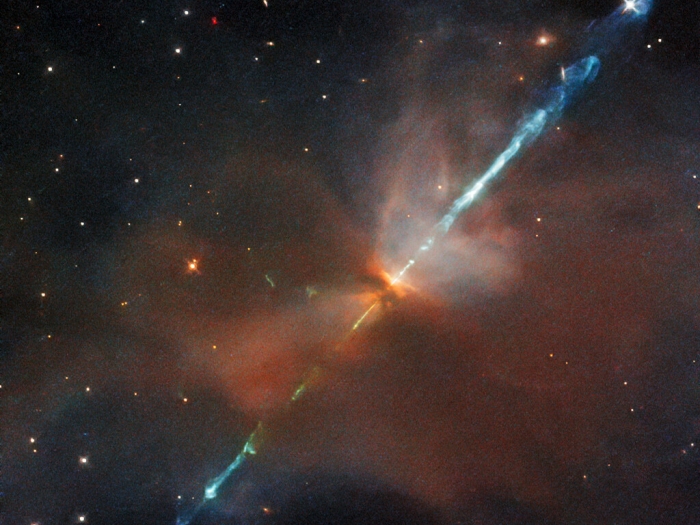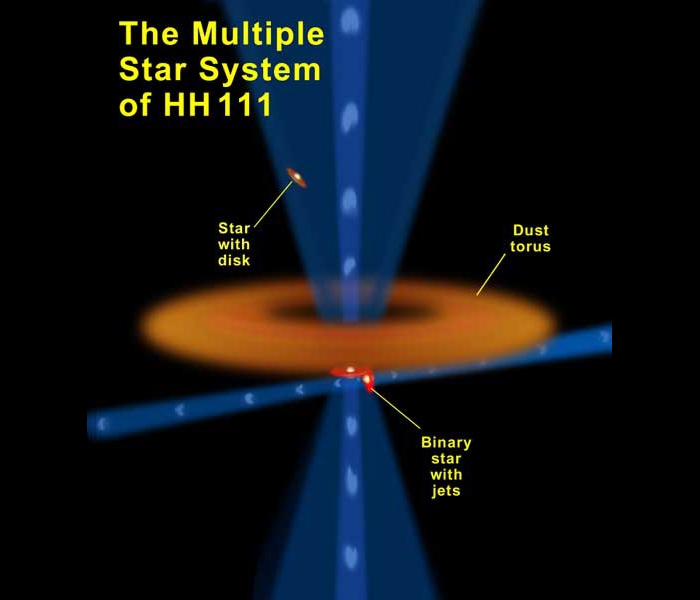The system is called IRAS 05491+0247, and it's at the center of a particularly rare and gorgeous cosmic interaction, known as a Herbig-Haro object. This particular Herbig-Haro object, called HH 111, is powered by a star in a binary system, blasting powerful astrophysical jets out into the surrounding space.
Herbig-Haro objects are some of the most spectacular in the galaxy, but they require a specific set of circumstances. First, you need a baby star. These are formed from dense clumps of material in a molecular cloud that collapse under their own gravity, and as they spin, they start accreting material from the cloud around them.
During this process, the star can blast out powerful jets of plasma from its poles. It's thought that some of the accretion material that is swirling around the star gets funneled along the star's magnetic field lines, which accelerate the particles so that, when they reach the poles, they are launched at considerable speeds into space as very tight collimated jets.
The insane temperatures involved ionize this material, turning it into plasma.
For a Herbig-Haro object, these jets, traveling at hundreds of kilometers per hour, then slam, hard, into the surrounding molecular cloud. Where these interactions occur, hot temperatures cause the material to glow brightly – but they evolve rapidly, too, especially on cosmic timescales, changing observably over just a few years. Jets emanating from HH 111. (ESA/Hubble & NASA, B. Nisini)
Jets emanating from HH 111. (ESA/Hubble & NASA, B. Nisini)
The HH 111 bipolar jet is created by one of the stars in a binary pair, located near a central torus of gas and dust that was the accretion material for the stars. From each pole, a jet stretches 12 light-years away from the star.The binary companion of this star is also, interestingly, spitting out jets, as was discovered a few years ago. It seems oriented perpendicularly to the first star, so its smaller jets are blasting out at right angles to the larger ones.These objects are really bright in optical wavelengths, but the dusty environs they inhabit block much of this light from escaping. Instruments that can penetrate the dust – for example, imaging in infrared wavelengths – reveal details that we wouldn't have been able to see otherwise. The secondary jets, discovered in 2000, were imaged this way. Objects in the star system. (ESA/NASA)
Objects in the star system. (ESA/NASA)
Those images from 2000 revealed a third star, too, which seems to have been ejected from the baby system, in an interaction of the sort that could help reveal why our Sun is alone and not in a binary.The new release, taken with Hubble's Wide Field Camera 3 instrument, was imaged in a combination of optical and infrared, showing the bright jets gleaming through the thick dust of the molecular cloud.You can download wallpaper-sized versions of Hubble's image of HH 111 on the Hubble website.



No comments:
Post a Comment